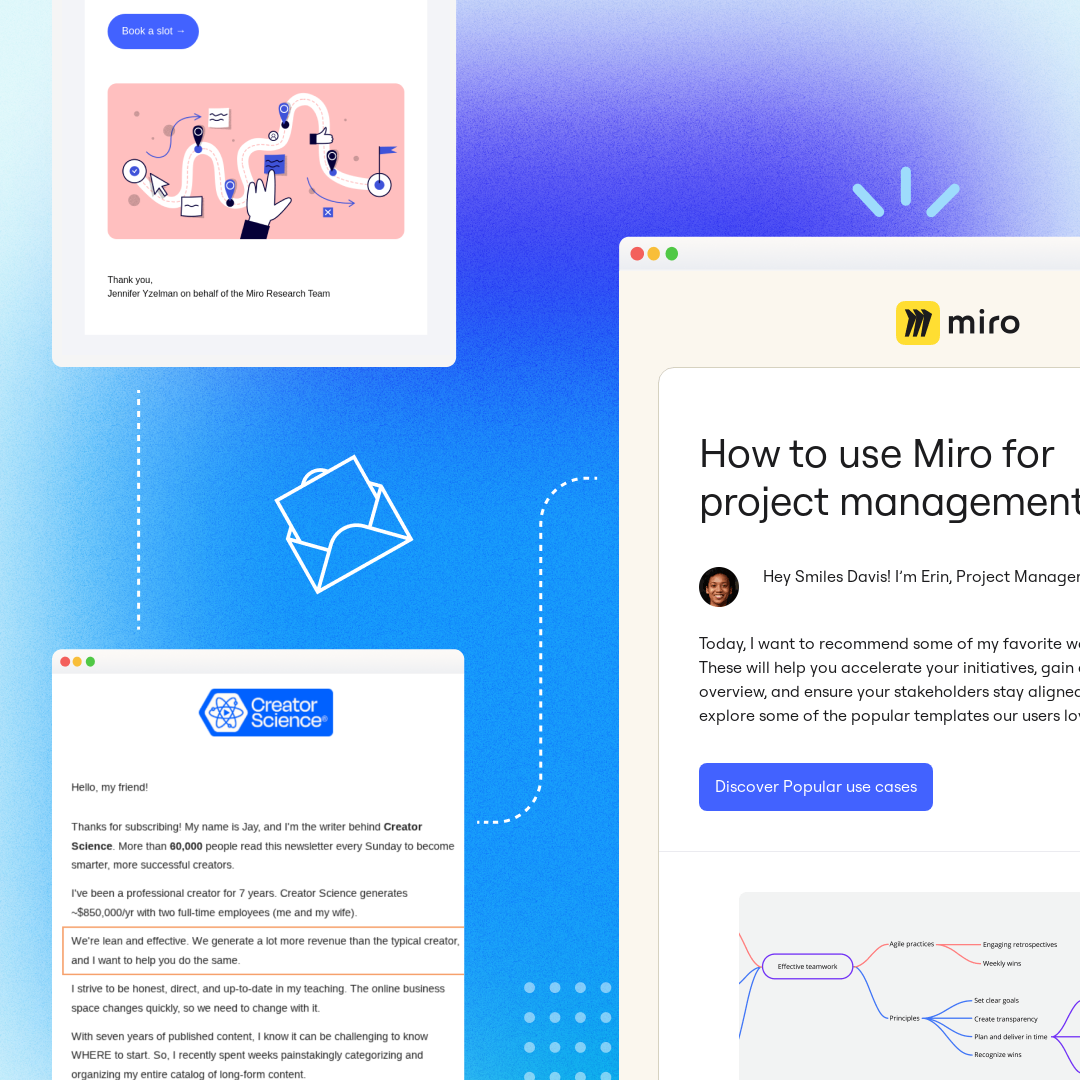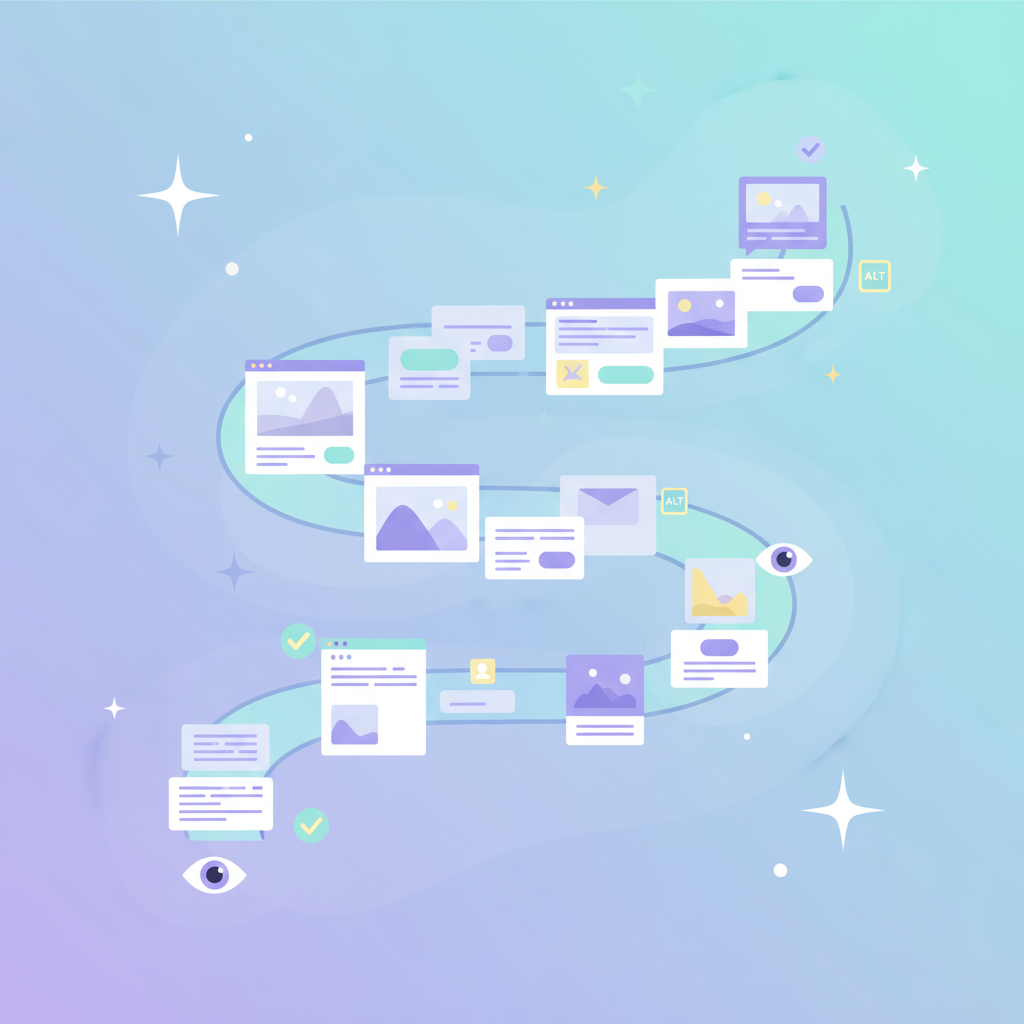
Abandoned cart email marketing is a must for any e-commerce business. Not sold? Take a look at these stats: Over 49% of abandoned cart emails are opened. 50% of opened emails get click-throughs. And 50% of those click-throughs ended with a purchase. Don’t just let your customers go — win them back with a strategic abandoned cart email to close the sale.
Abandoned cart email marketing is a must for any e-commerce business. Don’t just let your customers go — win them back with a strategic abandoned cart email to close the sale.
Why do customers abandon carts?
What counts as cart abandonment? Cart abandonment occurs when a customer puts a product in their cart but then leaves the website without actually making the purchase.There are several reasons customers might abandon their cart:
- Higher shipping prices than expected
- Slower delivery than expected
- Checkout process is too time-consuming
- Website crashes or is glitchy
- They are just browsing
- They believe they may find a better product or price elsewhere
Payment issues or deciding to buy in-store might play a part, too. Luckily, with the right abandoned cart email strategy, you can combat nearly every single one of these scenarios. Follow these abandoned cart email marketing best practices to get more conversions.
Consider abandoned cart email timing
When it comes to abandoned cart email timing, it’s best to send the message sooner rather than later. Ideally, your first abandoned cart email should be sent within an hour of the customer leaving your website so they don’t lose the urge to buy. If you decide to create an abandoned cart email series, send the second email a day later and the third a day after that. Marketo suggests the following abandoned cart email sequence:
- Email #1 should be sent within an hour and be helpful to the customer
- Email #2 should be sent 24 hours later and create a sense of urgency
- Email #3 should be sent 48 hours later and offer an incentive
Regardless of whether you create an entire series, however, your primary abandoned cart email should be sent just after the customer leaves your site.
Remind them what’s in their cart
In your abandoned cart email marketing, showcase the products the customer has in their cart. Don’t go overboard — if they have a dozen similar products, choose just one or two to highlight. You can also try upselling them. Here, Columbia included a few “Recommended for you” products under the main item from the cart.Subject line: Don’t leave your gear behind!

Offer a discount
One of the biggest reasons customers abandon their carts is because the final price is higher than they expected (due to taxes, shipping or other costs). That’s why one of the most effective ways to win a customer back is to send them a coupon code or offer free shipping. Zappos reminds customers they can shop without worry because the order includes free shipping and free returns.Subject line: Open Sesame! Your cart is ready for checkout.

Clearly communicate expectations
Be clear about your packing practices and expected delivery times as you craft your abandoned cart email marketing — especially during unpredictable situations such as the COVID-19 pandemic. One reason customers might leave their cart is because of longer shipping times. Reassure them that your company is doing everything in its power to ship orders in a timely manner. A simple line saying “We’re currently experiencing shipping delays, but doing our best to ship orders within 24 business hours” can help strengthen customer relationships.
Include testimonials
Customer reviews and ratings are extremely powerful. 72% of customers won’t take action unless they read reviews! Try including customer testimonials in your abandoned cart email marketing. Even a simple star rating by each product in the customer’s cart can go a long way, especially for new customers who might feel unsure about your brand.Subject line: Your shopping cart is calling

Strategically craft abandoned cart email subject lines
The right subject line can do a lot for your abandoned cart email conversion rate. Keep it short and simple for best results, and don’t be too aggressive (all caps is a bad idea). Your goal is to give your customer a gentle nudge. Here are a few examples:
- You’re so close to a day of fun
- Forget something in your AMC shopping cart?
- Psst… We’ve got you covered, complete your purchase
- Come back and shop!
- Are you still interested in Big Apple Circus?
Research also shows that mentioning a specific product in the subject line can entice people to open the email. Phrases like “free shipping” or “discount inside” might help with click rates, too.
Personalize your emails
In addition to personalizing your abandoned cart emails by including each customer’s products, add the customer’s first name too. This is especially important for longtime customers because it can help them feel valued. In this abandoned cart email example, Gap included the customer’s first name in both the subject line and in the body of the email.Subject line: Samantha, don’t forget your order!

Carefully place the CTA
Give your customers an easy one-click process to get back to their cart. Your CTA button should be clear and visible; choose a bright color and put it right under the product photo. For example, here Inchbug strategically placed its pink CTA under the item that was left in the cart. Think about the text you put on the button, too. “I want it!” might help encourage impulse buys.Subject line: Baby come back!

Wrap-up: Abandoned cart email template
Ready to start winning customers back? Use BEE’s abandoned cart email templates to help.

The “Don’t Forget About Me” template by designer Yuliana Pandelieva can help e-commerce brands do abandoned cart email marketing more effectively.

Our “Still Shopping?” email template by designer Navid Nosrati is another great option for an abandoned cart message that can help you win more conversions and bring your customers back.
Share this post with your friends! Pin it on Pinterest ?




